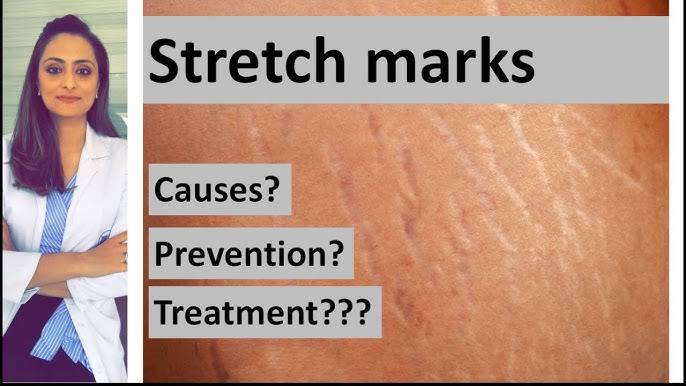Effective Ways to Minimize Stretch Marks
Stretch marks are a completely natural part of life and something many of us experience. Often appearing after big life changes like rapid weight shifts, pregnancy, or growth spurts, these pink, purple, or white lines on the skin are common and harmless. But for some, they can bring a sense of self-consciousness. The good news? There are treatments—both simple and more advanced—that can help reduce their appearance over time. Here’s a guide to some of the best ways to manage stretch marks and make peace with your skin.
1. Keep Your Skin Hydrated with Hyaluronic Acid and Vitamin E
Why Moisture Matters
Keeping your skin hydrated is one of the easiest ways to improve stretch marks. Moisturized skin tends to be softer and more elastic, which can make stretch marks look less noticeable. Two powerhouse ingredients—hyaluronic acid and vitamin E—are especially helpful in locking in moisture and boosting skin elasticity.
How to Use These Ingredients
- Find a Cream with Hyaluronic Acid: Known for its incredible hydrating properties, hyaluronic acid helps skin retain moisture, making stretch marks appear softer over time. Apply twice daily for the best results.
- Add Vitamin E: This vitamin is celebrated for its skin-healing benefits and is often found in moisturizers or can be used as an oil directly on stretch marks. It can support skin regeneration, gradually making marks less visible.
- Stay Consistent: Regular application is key. Applying your moisturizer or oil daily helps improve skin texture, making stretch marks softer and less prominent.
With regular hydration, your skin will feel smoother and healthier, and stretch marks may gradually fade.
2. Use Retinoid Creams to Encourage Skin Renewal
How Retinoids Work
Derived from vitamin A, retinoids are commonly used to renew skin cells and boost collagen. Prescription-strength retinoids, such as tretinoin, are particularly effective on newer stretch marks that are still pink or purple, helping smooth their appearance.
How to Safely Use Retinoids
- Consult with a Dermatologist: Retinoids require a prescription, so speak with a skincare professional to see if they’re right for you. They’re especially helpful for those with new stretch marks, but may not be ideal for everyone, especially those with sensitive skin.
- Use on Newer Marks: Retinoids work best on fresh marks that haven’t faded to white yet, as they promote collagen production and support skin renewal.
- Apply at Night: Since retinoids increase sun sensitivity, use them at bedtime. During the day, wear sunscreen to protect your skin.
While retinoid creams may not be suitable for everyone, they can be highly effective for fading stretch marks when used with guidance.
3. Try Chemical Peels for Smoother Skin Texture
How Chemical Peels Help
Chemical peels exfoliate the skin by removing the outer layer, encouraging new skin growth. They can be particularly effective at improving skin texture and lessening the visibility of stretch marks.
Getting Started with Chemical Peels
- Visit a Professional: For deeper peels that target stretch marks more effectively, it’s best to see a dermatologist. Medium to deep peels reach deeper layers of skin and can make a bigger difference.
- Start Gently: If you’re new to peels or have sensitive skin, consider starting with a lighter glycolic acid peel to see how your skin responds.
- Follow Aftercare Guidelines: After a peel, be gentle with your skin—use sunscreen, stay out of direct sun, and apply a moisturizer to help it recover.
With time, chemical peels can encourage new skin growth and improve the texture and look of stretch marks.
4. Boost Collagen Production with Microneedlin
What Microneedling Does
Microneedling involves using tiny needles to create small “micro-injuries†in the skin, which triggers your body’s natural healing response. This process promotes collagen and elastin production, both essential for smoother, more resilient skin.
Microneedling Tips for Stretch Marks
- Expect a Collagen Boost: The new collagen that forms during healing helps smooth out the appearance of stretch marks.
- Plan for Multiple Sessions: Microneedling usually requires a few treatments, spaced out over several weeks, to see the best results.
- Professional vs. At-Home: While at-home devices are available, professional treatments tend to be more effective, especially for deeper stretch marks.
Microneedling can be used on both old and new stretch marks, though it may take time to see noticeable improvements.
5. Consider Laser Therapy for Long-Term Results
How Laser Therapy Works
Laser therapy is one of the more advanced ways to reduce stretch marks. Using focused light, lasers target affected skin areas, encouraging collagen growth and improving skin tone. Different types of lasers are used for various types of stretch marks.
Types of Laser Therapy
- Pulsed Dye Laser (PDL): Great for new, red stretch marks, as it targets blood vessels beneath the skin, reducing redness and supporting healing.
- Fractional Laser: Ideal for older, white stretch marks, as it penetrates deeper layers of skin to stimulate collagen and encourage new skin growth.
- Plan for Multiple Sessions: Most laser treatments require several sessions to achieve the best results, with a few weeks between treatments.
Laser therapy can be a pricier option, but it’s highly effective for both new and old stretch marks.
6. Massage with Natural Oils for Gradual Improvement
Why Natural Oils Are Helpful
Massaging stretch marks with nourishing oils can boost circulation and gradually improve skin elasticity. Oils like coconut, rosehip, and almond are packed with antioxidants and fatty acids that help nourish the skin.
How to Use Oils for Stretch Marks
- Choose High-Quality Oils: Look for cold-pressed, organic oils to ensure they’re packed with nutrients. Rosehip oil, for instance, contains a form of vitamin A that helps with skin renewal.
- Apply Daily: Regularly massaging the affected area promotes blood flow and may improve elasticity.
- Add Essential Oils: A few drops of essential oils like lavender or frankincense, when diluted, can add extra skin benefits and a soothing scent to your massage routine.
While oils may not fully remove stretch marks, with consistent use, they can help soften and fade marks over time.
7. Hydrate and Nourish Your Skin from Within
How Hydration and Nutrition Play a Role
Proper hydration and nutrition are crucial for maintaining healthy skin. Drinking water regularly keeps skin cells hydrated, while a balanced diet supports skin repair and resilience.
Dietary Tips for Healthier Skin
- Stay Hydrated: Aim for plenty of water each day. Hydrated skin is more supple, making stretch marks less noticeable.
- Eat Foods That Support Collagen: Include foods rich in vitamin C (like citrus fruits and leafy greens) to promote collagen production.
- Get Enough Protein and Zinc: These nutrients are key for tissue repair and skin health. Incorporate sources like nuts, seeds, lean meats, and eggs.
A nutritious diet and good hydration habits help keep your skin strong and more resistant to new stretch marks.
Stretch marks are a natural part of life, but there are many ways to help reduce their appearance. From daily moisturizing and gentle oils to professional treatments like microneedling and laser therapy, there’s a method to suit every comfort level and budget. Consistency is the secret—regularly caring for your skin can lead to gradual improvements and help you feel more confident. Remember, stretch marks tell a story of your body’s changes and resilience, and while reducing them is an option, embracing them is just as beautiful.


